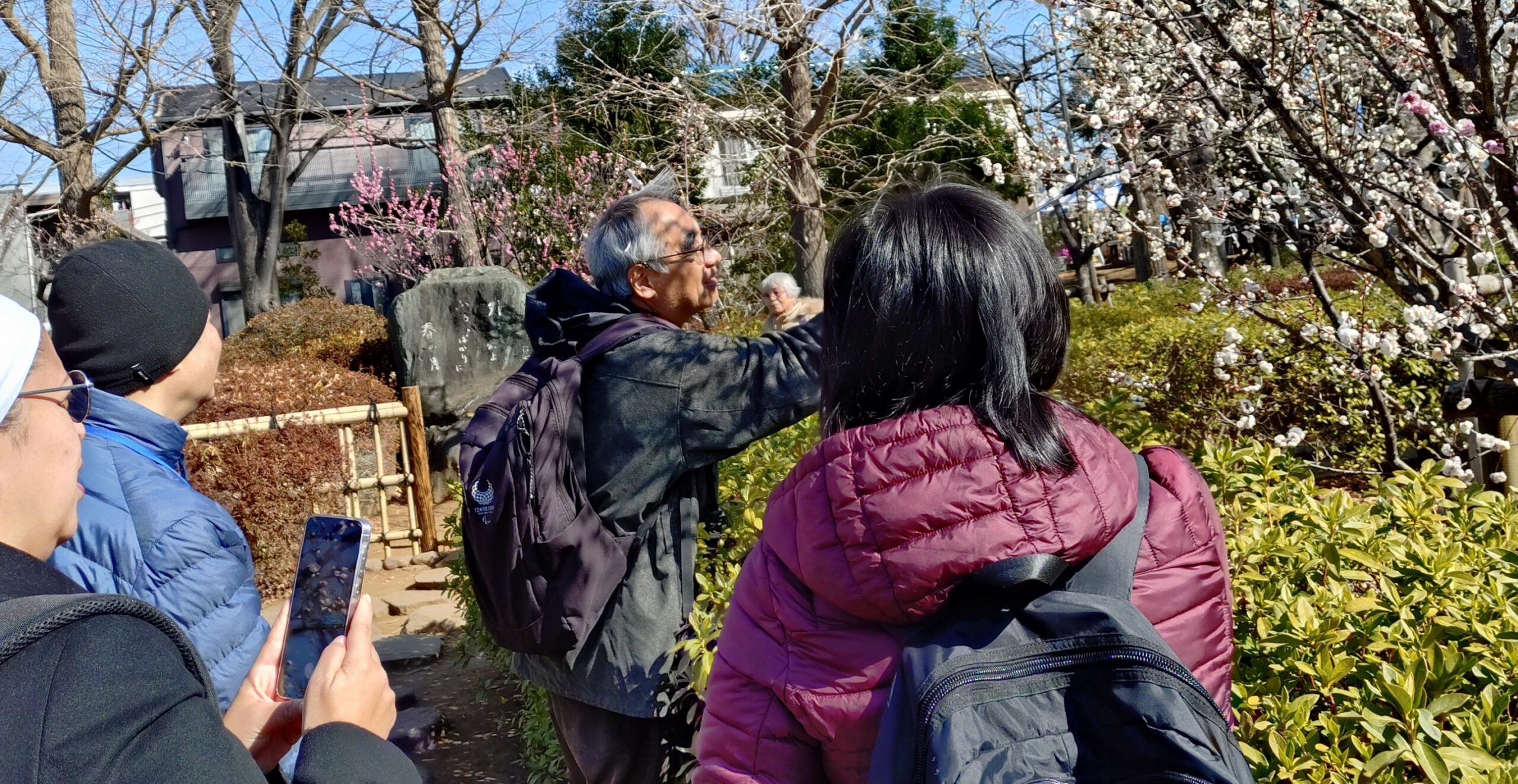



Yesterday, I guided the people who are participating in JICA (Japan International Cooperation Agency) course to Hanegi Park in Setagaya and Gotokuji Temple, famous for its maneki-neko (beckoning cat). Japaanese apricot or ume blossoms are less well known than cherry blossoms, and there are few opportunities to see them overseas, but when JICA recruited participants for the tour, over 20 people applied, and the tour was divided into five groups. I was in charge of one of the groups and guided four people. The four people were from Vietnam, Egypt, and two from Kyrgyzstan, and most of them had never seen ume blossoms before.



In the ume plum garden, I tried to explain the history of ume blossoms, their develoipment from wild one, their fragrance, and how to enjoy the differences between the various varieties, so that they could learn as enjoyably as possible.



And since it was February 22nd, Cat Day in Japan, Gotokuji Temple was crowded with many people. Recently, the temple has become popular with foreigners, thanks to the cuteness of its maneki-neko (beckoning cat), and I explained the story behind how this temple became a maneki-neko temple, how it is different from a normal maneki-neko (it has its right paw raised, but it does not have a gold coin, so it is not directly inviting money), and how to properly handle maneki-neko. I also told the visitors not to immediately place the cat in the temple grounds after buying it, but to take it home with them and to be sure to return with it when their wish is granted, and we all prayed for their return to Japan and to this temple.
I have learned a lot from these tour guides, who are mostly volunteers, and I hope to be able to combine them well with regular tour guides and become a guide who can handle a wide range of needs. Most of the photos were taken during the site inspection.
